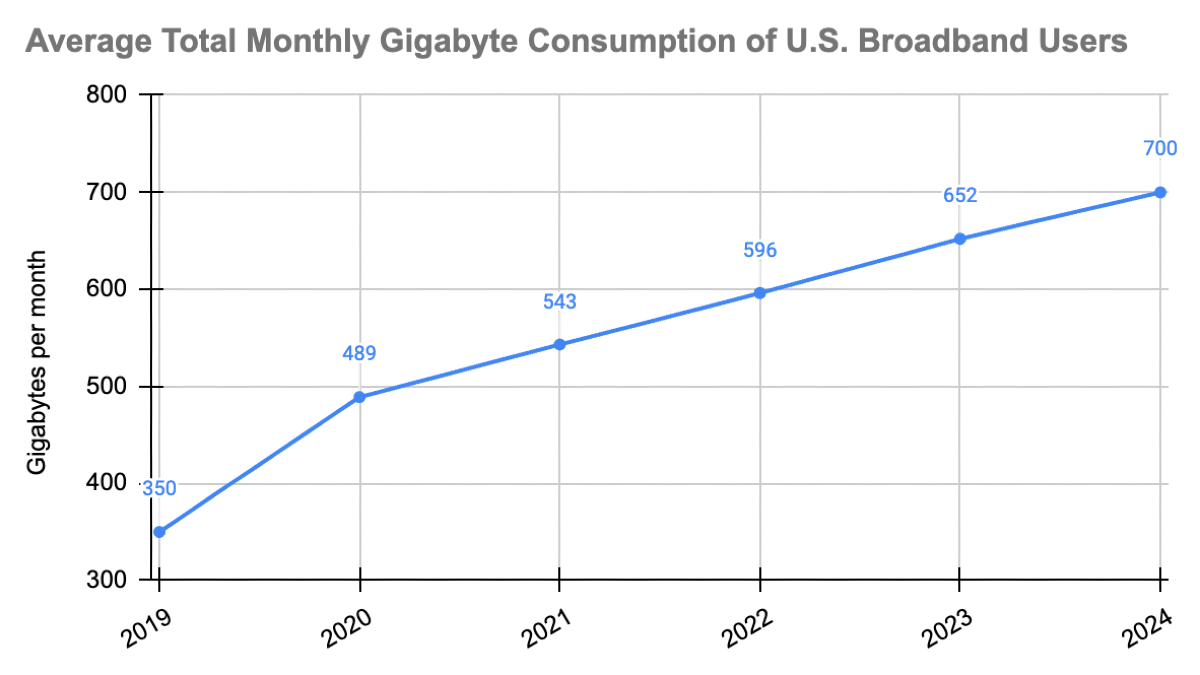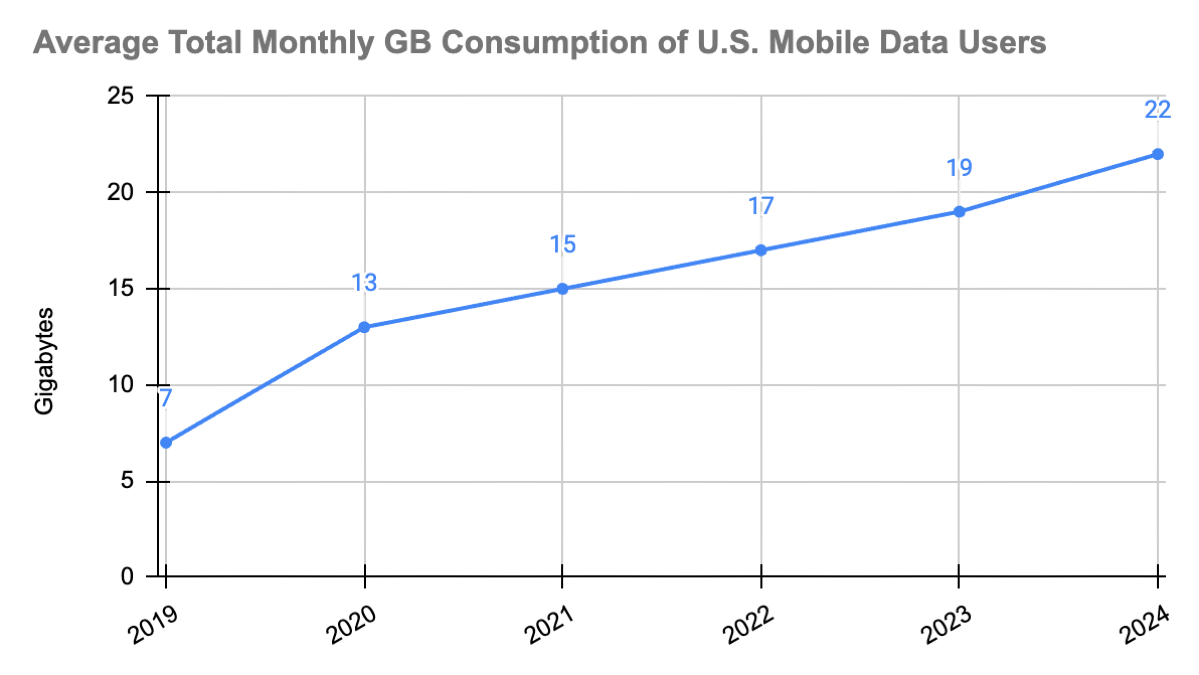How Much Data Does the Average Person Use Per Month?

In our increasingly connected world, data has become the lifeblood of our daily activities. From streaming our favorite shows and scrolling through social media to attending virtual meetings and online shopping, we're constantly consuming and generating data.
But how much data does the average person actually use in a month? The answer might be more than you think!
Pinpointing is impossible
While pinpointing an exact figure for every individual is impossible due to varying online habits, several sources offer valuable insights.
On average, a single internet user might consume anywhere from 300 to 500 GB of data per month. However, this is just a general estimate, and actual usage can swing significantly based on several factors.

For a broader picture, looking at household consumption can be helpful. Reports indicate that the average American household uses between 650 and 700 GB of data per month. This higher number reflects the combined usage of multiple devices and users within a home.

Mobile data usage is another important piece of the puzzle. According to a 2024 Ericsson report, the average mobile data subscriber in North America currently uses around 22 GB per month. This number is also on the rise, fueled by the increasing availability of faster mobile networks and data-intensive applications.
What drives these numbers?
Several key activities contribute to our monthly data consumption:
- Streaming: Watching videos on platforms like Netflix, YouTube, and other streaming services is a major data consumer. High-definition and 4K streaming can use gigabytes of data per hour.
- Social Media: Scrolling through feeds, watching videos, and sharing content on platforms like Facebook, Instagram, and TikTok all contribute to data usage.
- Online Gaming: Downloading games and updates can consume significant amounts of data, and even online gameplay uses data.
- Video Conferencing: With the rise of remote work and online learning, video calls on platforms like Zoom, Skype, and Google Meet have become a significant data consumer.
- Downloading and Uploading Files: Whether it's work documents, photos, or software updates, these activities use data. Larger files mean more data.
- Web Browsing: While generally less data-intensive than video, visiting websites with lots of images and videos can add up.
This is not the full picture
It's also important to remember that these are averages. Some individuals who primarily browse the web and send emails might use significantly less data, while heavy streamers, gamers, and households with multiple active users could easily exceed these averages.
Enjoyed this article? Read more articles and guides at shopcellplans.com.

